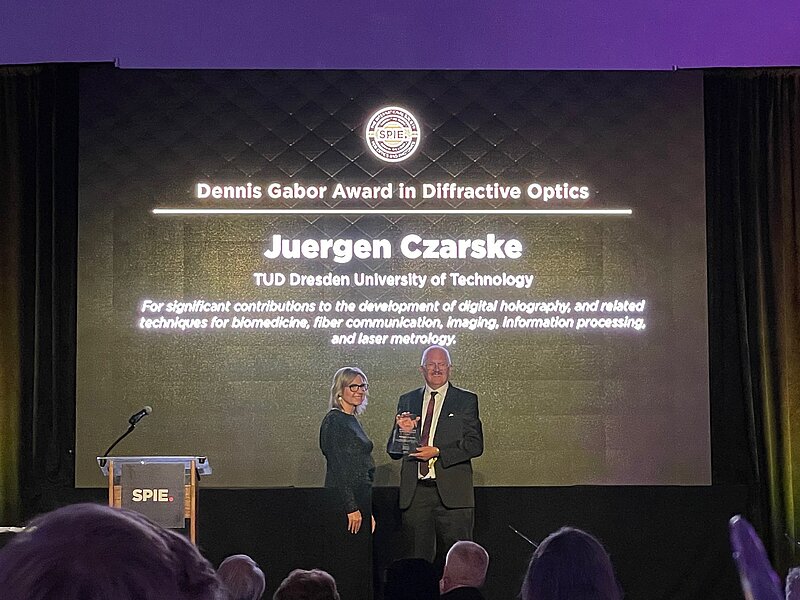Jürgen Czarske, a professor of computer and electrical engineering at TU Dresden, is a widely recognized inventor of laser technologies and diffractive optics innovations in imaging, information technology, and holography. His outstanding accomplishments in diffractive wavefront technologies have advanced the development of digital holography and metrology applications such as green photonics, biomedicine, and multimode fiber communications. In one of his most well-known achievements, he introduced a truly game-changing paradigm shift in laser Doppler velocimetry (LDV) metrology by overcoming the diffraction-induced complementarity of distance and velocity measurements. This groundbreaking success led to real-world applications from plasma technology and noise-reduction in aircraft engines, to green photonics-related energy-efficient processes in fuel cell stacks.
The Society has previously recognized Czarske, an SPIE Fellow, with its 2022 Chandra S. Vikram Award in Optical Metrology. The advisor of the SPIE Student Chapter at TU Dresden and elected vice president of the International Commission for Optics, Czarske is also an active member of multiple SPIE conference program committees at SPIE Photonics Europe. He is the recipient of a 2008 Berthold Leibinger Innovation Prize, an award that recognizes successes and innovations in applied laser technology, for the development of the laser Doppler distance sensor and its applications. Other honors include the 1996 AHMT Measurement Technology Prize, Optica's 2019 Joseph Fraunhofer Award/Robert M. Burley Prize, and the IEEE Photonics Society's inaugural Laser Instrumentation Award in 2020. Czarske is also widely respected for his work with students: some of the prizes his students and postdocs have won include the Science Award of the Gisela and Erwin Sick Foundation; the RWB Stephens Prize; the Siegfried Werth Foundation Prize; the German Society of Applied Optics’ Young Scientist Award; and the Bertha Benz Prize, an award for female engineering students who have incorporated social-added value in their dissertations.
“Professor Czarske has published more than 200 papers in peer-reviewed journals and delivered over 100 invited talks; he also holds over 30 patents and, together with ILA R&D, has commercialized his innovations,” says University of Connecticut’s Board of Trustees Distinguished Professor and SPIE Fellow Bahram Javidi. “But he is also an extremely successful and talented educator, supervising many students in the area of computational laser metrology in his professional and accessible manner. I admire the advances that Professor Czarske has made in computer-based holography that have led to new approaches in biomedicine, such as optogenetics in which light is used to control neurons: this work includes the holographic stimulation of human-induced pluripotent stem-cell derived neural networks to study neurodegenerative diseases without animal experiments. I am also full of respect in the ways in which he is educating the next generations of our scientists.”
Original source: spie.org
